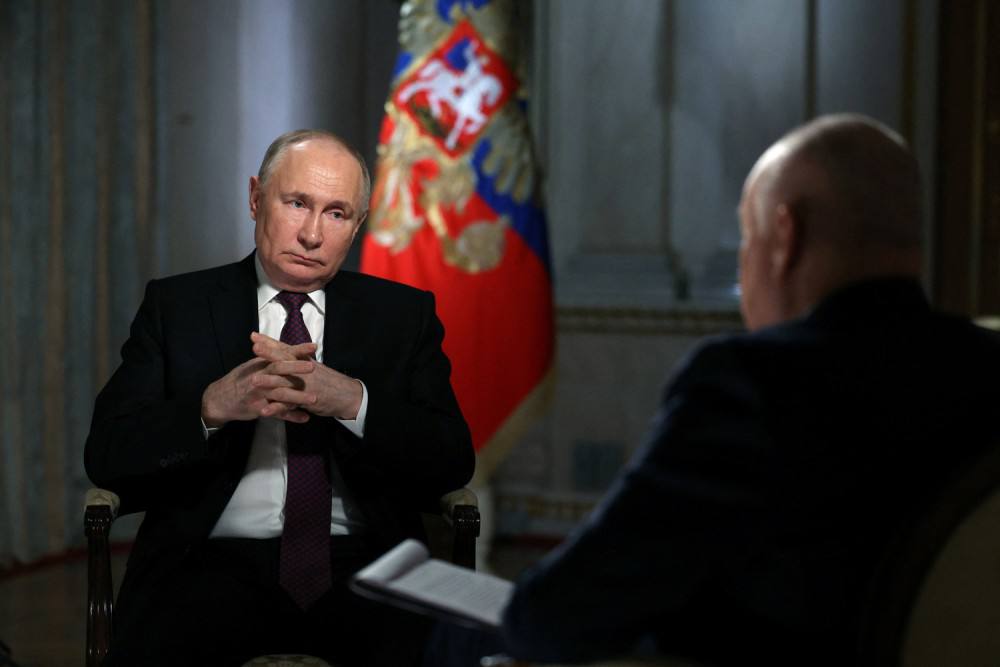Zelensky sinks Russian Navy commander
Ukraine delivers the final blow
Zelensky sinks the Russian Navy commander. Moscow dismisses the Navy commander and Biden tries to rally Congress. The United States will send $300 million in arms to Ukraine. The US Congress has been holding Ukrainian aid hostage, but Ukraine can no longer wait, and the US government is taking action.
National Security Advisor Jake Sullivan told reporters today, on behalf of President Biden, that an emergency security assistance package and $300 million in weapons and equipment will be announced to address some of Ukraine’s urgent needs. The Pentagon has stated that this is an extraordinary and short-term measure, even if it may not be enough to cover the needs of the Ukrainian armed forces.
The new provisions, funded from savings in US military arms contracts, include new Stinger missiles, ammunition for missile systems, artillery shells, anti-tank rockets, and small-caliber ammunition. This assistance can only be sufficient for a few weeks.
On Wednesday, March 12, in honor of the 25th anniversary of Poland’s membership in NATO, President Joe Biden met with his Polish counterpart Andrzej Duda and Prime Minister Donald Tusk at the White House. Biden reiterated the importance of continuing support for Ukraine in its war against Russia. Tusk then warned House Speaker Mike Johnson, a Republican, that the fate of thousands depends on the release of $60 billion in aid.
Meanwhile, the French Parliament in Paris approved new military aid to Ukraine despite the abstaining vote of the far-right National Rally coalition. Yesterday, the Danish government also announced it will donate 23 billion kroner, equivalent to $337 million, for the purchase of weapons and ammunition to Kyiv.
Ammunitions in the midst of conflict
The issue of arms production and supply has become a crucial factor in the conflict within the conflict, determining the outcome of the war. Currently, Russia seems to have placed itself in a better position. Moscow appears to have almost triple the production capacity of artillery ammunition compared to the combined output of the United States and Europe, a key advantage considering the Kremlin’s planned offensive by the end of this year.
According to a report by CNN, citing a senior European official, it has been said that Moscow produces around 250,000 artillery shells monthly, which amounts to about 3 million per year. In comparison, the current capacity of the US and Europe for Ukraine is about 12 million per year. The US Army has set a goal to produce 100,000 artillery shells per month by the end of 2025, less than half of Russia’s monthly production. However, if the budget for Kyiv is blocked in Congress, even this increase may be out of reach.
The NATO official claims that Russian military machinery operates 24/7 with factories running on rotating 12-hour shifts, seven days a week. Additionally, around 35 million Russians are currently employed in the defense industry, whereas before the war, the number was 25 million. Moscow also imports ammunition, having received at least 300,000 artillery shells from Iran and 6,700 crates of ammunition from North Korea last year.
Critical Time
A shortage of ammunition may occur at the most critical time for Ukraine since the conflict began. Despite the months-long stalemate on the battlefield, Moscow is widely recognized as the party that has shown the most significant initiative in recent months.
In fact, the counterattack that Kyiv launched last summer did not achieve its goals. US aid to Ukraine has been blocked by Republicans in Congress, and recently Russia has also occupied the city of Avdiivka.
Moreover, it seems that there was a significant shortage of ammunition because Ukraine is struggling with an increasing shortage of men to send to the front lines. When the Kremlin launched its full-scale invasion in 2022, many Ukrainians volunteered to defend their country, but this reserve has been depleted, and currently many eligible men are unwilling to deploy to the front.
The shortage of ammunition, along with mandatory tours and lack of leave, are among the reasons for the decrease in conscripts. In the first public announcement about war casualties, President Volodymyr Zelensky stated last month that 31,000 Ukrainian soldiers have been killed so far, but it is believed that the actual number is much higher than this figure.
The proposal to lower the conscription age to 25 has sparked strong reactions from those concerned that sending younger individuals to the war front would be akin to suicide for the country. However, what has demotivated many is primarily the atmosphere of distrust and fear of losing Western support for the resistance.
Nothing is lost.
Despite this, according to Western sources, it is expected that Russia will gain significant advantages in the battlefield in the short term, and if Western support resumes, nothing will be lost. Today, news has been published that Vladimir Putin, the President of Russia, dismissed the commander of the Russian Navy after suffering humiliating losses in the Black Sea. Admiral Nikolai Yevmenov, who had been leading the Navy since 2019, was replaced by Alexander Moiseyev, the commander of the Northern Fleet.
American officials believe that while the anti-Kiev offensive in the eastern and southern regions of Ukraine has largely failed, the attacks on the Crimean Peninsula and the Black Sea Fleet have been beyond expectations and highly effective. These victories have been surprising because Ukraine lacks a traditional navy and warships, while Kiev used drones and sea missiles to attack Russian warships and has sunk 15 Russian ships in the past six months.
The naval successes led to breaking the blockade imposed by Moscow on Ukrainian ports and effectively reopened the Black Sea for Kyiv’s ships to once again transport wheat and grains from the port of Odessa. According to reports, these exports in the past month included 8 million tons of various products, including 5 million tons of agricultural products, the highest amount since the start of the Russian invasion.
There has been much talk about the failure of Ukrainian counterattacks, but there is a front where Kyiv has demonstrated its ability to creatively leverage available tools to strike at Russia in one of the most sensitive points, the Black Sea.
While the lack of a major land breakthrough has overshadowed these successes, their undeniable importance remains. In fact, the Russian fleet can no longer operate freely in the western Black Sea as Ukraine has succeeded in establishing a maritime corridor for exporting its grains to global markets.
In addition to helping alleviate the financial situation of the affected countries, this action was also a kind of signal, in a way, that Moscow thought by withdrawing from the grain agreement, it would bring Ukraine to its knees, and ultimately the change in the leadership of the Russian navy could be evidence of how much this humiliation was costly for Moscow.
Persian
مشاهده این مقاله به زبان فارسی


